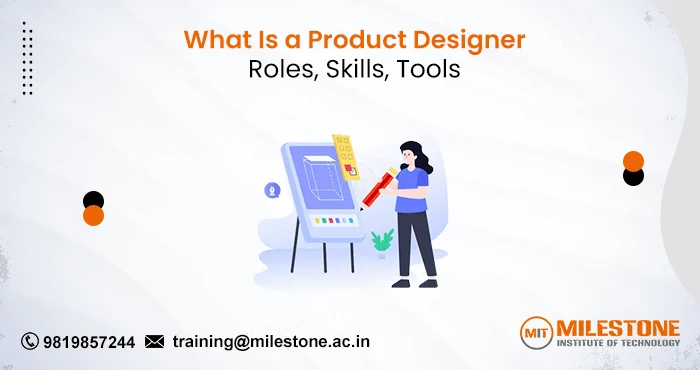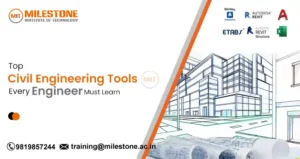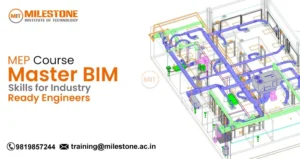In the ever-changing landscape of design and technology, a product designer’s importance is now quite great. Combining art, science, and technology to produce aesthetically pleasing and functionally useful items, product designers are the creative brains behind the daily objects we use. This blog explores
what is a product designer, their primary responsibilities, the tools they employ, and how to start a career in product design.
What is a Product Designer?
A product designer is a person who creates products that fulfill both user needs and business goals. Through the whole product life cycle, from start to market launch (ideation and sketching as well production), they are crucially important. The
product design is where the rubber meets the road, and this balance of functionality/usability/aesthetics has to align with company branding and customer expectations.
What Does a Product Designer Do? – Essential Roles
Product Design is multidimensional and the role can vary based on industry & project. But, there are some core responsibilities that virtually every role in the industry shares:
1. Research and Ideation
A team of product designers start with comprehensive research to learn about target customers, market trends and competition. This phase includes gathering input through surveys, interviews and observations to understand user needs & pain points. Designers then use this research to ideate – coming up with ideas of ways in which these issues can be addressed.
2. Sketching and Prototyping
After ideas are being fleshed out, designers get the preliminary sketches and prototypes going. Sketching helps in articulating the idea, while prototyping helps to test how well it works in a functional and usable state. Prototypes can be anything from rough paper mockups of the interface to detailed digital simulations.
3. User Testing and Feedback
Prototypes are tested with the real users to give feedback. This stage is so important as it exposes potential errors and areas of improvement. Product designers need to know how to respond appropriately to feedback and make sure your design has been updated correspondingly.
4. Collaboration with Engineers and Marketers
Product designers are responsible for collaborating with engineers to make the design achievable and easy to replicate on a larger scale. They also cooperate with the marketing team to align the product’s features with what the market demands and strategize the product launch.
5. Final Design and Production
Product designers complete the product specs following design improvement based on customer comments and technological limitations. This covers thorough drawings, 3D models, and material specs. The production team receives the final design then for manufacture.
6. Post-Launch Evaluation
The designer’s work is never finished even once the product is introduced. Analyzing market performance, compiling user comments, and spotting chances for future enhancements or new product versions are the components of post-launch evaluation.
What are the Tools Used by Product Designers?
Product designers employ a number of tools across the design process. One may generally classify these instruments into drawing, prototyping, and collaborative tools.
Sketching Tools
- Pencils and Paper: Traditional tools for initial idea sketching and brainstorming.
- Graphic Tablets: Devices like Wacom tablets for more refined and digital sketching.
Prototyping Tools
- Adobe XD: A powerful tool for creating interactive prototypes and wireframes.
- Sketch: A tool for vector-based design extensively applied in UI/UX design.
- Figma: A tool for online cooperative interface design enabling real-time teamwork.
- InVision: A prototyping tool that enables designers to create interactive and animated designs.
3D Modeling Tools
- SolidWorks:SolidWorks is solid modeling CAD software used for creating 3D models and simulations.
- AutoCAD: A versatile tool for 2D and 3D design and drafting.
- Rhinoceros (Rhino): A 3D computer graphics and CAD application commonly used for industrial design and architecture.
Collaboration Tools
- Slack: A communication platform for team collaboration.
- Trello: A project management tool that helps in organizing tasks and tracking progress.
- Asana: Another project management tool used for managing workflows and deadlines.
User Testing Tools
- UserTesting: A platform for gathering user feedback through video recordings and interviews.
- Hotjar: A tool that provides heatmaps, session recordings, and surveys to understand user behavior.
Product Designer Career Pathway
Typically starting with a solid background in design, engineering, or a related field, the path to becoming a product designer usually begins Degrees in industrial design, graphic design, or engineering occurring among many product designers. It is absolutely vital to get useful experience through internships or entry-level jobs. Advancement in one’s profession depends on creating a strong portfolio with a variety of design work. Designers that have experience can advance to senior designer jobs, design management positions, or even leadership roles including Chief Design Officer (CDO).
Where to Learn Product Design Course?
Future product designers have a lot of instructional tools at their fingertips. Degree programs in product design, industrial design, or other related fields are offered by many schools and institutions. Online resources also provide thorough courses on the foundations of product design. We will suggest Milestone Institute of Technology, they provide
product design course which includes personal training with live projects, career guidance from experienced faculties and many more for students successful career growth. As per the google reviews MIT is one of the best institutes which students recommend.
Frequently Asked Questions
What skills are essential for a product designer?
Product designers must combine technical and creative skills. Important abilities are drawing,
3D modeling, prototyping, user testing, and a solid awareness of materials and production techniques. Significantly essential are outstanding communication and teamwork abilities.
How are product designers and industrial designers different from one another?
An industrial designer works on the physical form, aesthetics, and ergonomics of a product; a product designer usually emphasizes on the digital and user experience elements of a product.
Why is a portfolio important for a product designer?
A portfolio is vital for a product designer as it showcases their skills, creativity, and experience. It is often the first thing potential employers or clients look at when evaluating a designer’s capabilities.
Can you become a product designer without a formal degree?
Although a formal degree offers a strong basis and enhances employment possibilities, one may become a product designer without one. Many accomplished designers have developed their abilities via courses, seminars, and hands-on experience; they are self-taught. Success in this profession mostly depends on developing a solid portfolio and acquiring practical knowledge.




